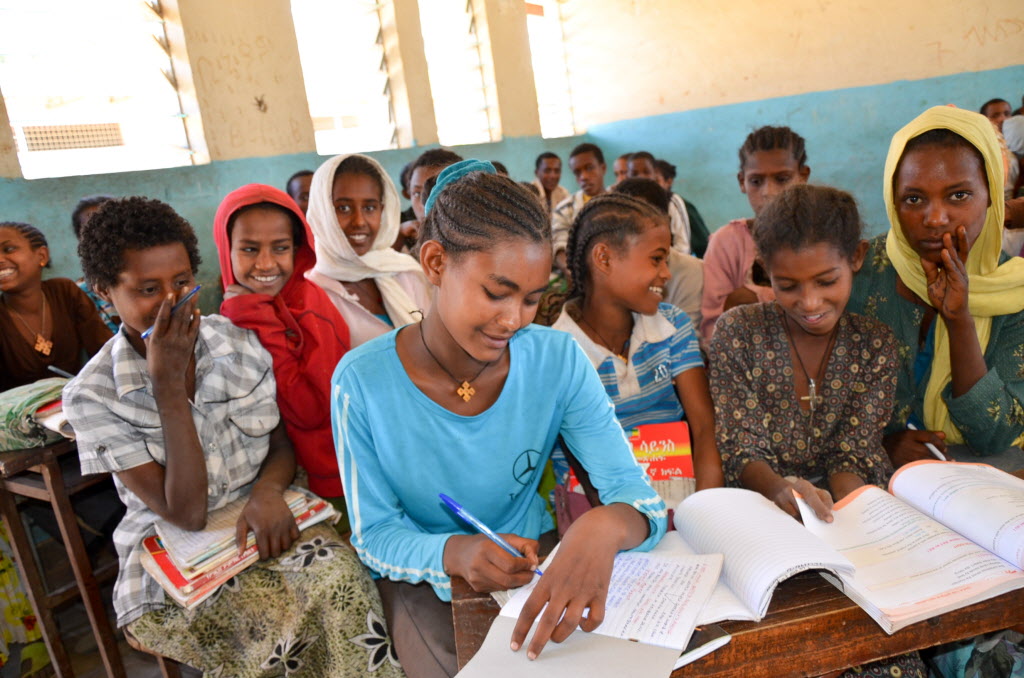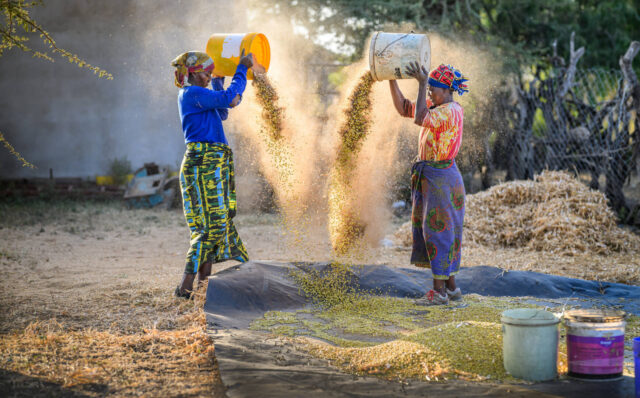Habtam, 16, lives about 400 miles northeast of Addis Ababa, the Ethiopian capital. Child marriage is widespread in this region, despite the government’s efforts to stop it. Local residents often agree to marry off their children before they’re even born. Habtam’s parents were among them. So were the parents of the boy to whom she was given for underage marriage.
Habtam accepted her forced marriage at age 15. She had no other choice.
“I said to my mom [that] I didn’t want to quit my school,” says Habtam. “[My husband] had to promise to send me to school. He did in the presence of the elderly people.”
A determination to continue her studies
Her to-be husband, however, didn’t keep his word — not even for one day.
“I was so angry and maddened. I cursed the day I accepted the marriage,” recalls Habtam. “I had said to myself I should have disappeared [instead of marrying] him.”
But Habtam’s love for school didn’t allow her to resign to her husband’s idea that she become a housewife. When he went to work, she began to attend the school secretly.
“Learning that I was attending while he was out for farming, he first warned me not to do so again,” says Habtam. “But I didn’t quit. I continued attending school secretly.”
Physical and emotional abuse
So her husband began to physically abuse her. She remained undeterred in her determination to keep up her education — but each time she went to school behind his back, he would beat her brutally.
Finally, her mother and other adults involved themselves in the matter, asking Habtam’s husband to keep his word and allow her to go to school. But he refused; and just two months after their marriage, they divorced. Now, Habtam lives with her mother and continues attending school.
But the memories of her underage marriage have scarred Habtam. “I feel bad and got upset whenever I remember the time of my marriage,” she laments, adding that she doesn’t perform as well in school as she once did.
“The thing has also affected me both psychologically and socially,” Habtam adds. “People point their finger at me, even at school, saying, ‘look, this girl is divorced!’ When I try to answer a question in the class, I hear children murmuring.”
Habtam has a message about her traumatic experience. “Early marriage is the worst practice … it is a heartbreaking practice. The world should join together to say no the early marriage practice,” she says with resolve. “May what happened on me may not happen on the others.”
How sponsorship can help end child marriage
World Vision child sponsorship aims to prevent the kind of ordeal faced by girls like Habtam. In many developing countries around the world, girls are valued less than boys. They’re expected to marry young, aren’t given the opportunity to go to school and pursue their dreams, and are vulnerable to exploitation.
But by sponsoring a girl in a country like Ethiopia, you can help prevent destructive outcomes like child marriage. Sponsorship provides life-giving basics like nutritious food, clean water, medical care, and safe shelter. It also helps girls to stay in school, complete their studies, and pursue their dreams for the future, and it educates communities on the negative consequences faced by girls who drop out of school and marry too young.
Two ways you can help girls
Pray for girls in developing countries around the world who are at risk for child marriage and exploitation. Pray that they would find the means to stay in school and reach their God-given potential.
Sponsor a girl in Ethiopia or another country of your choice. You can be the love and support that helps a girl in need to complete her education, avoid child marriage, and build the foundation for a future of hope.




